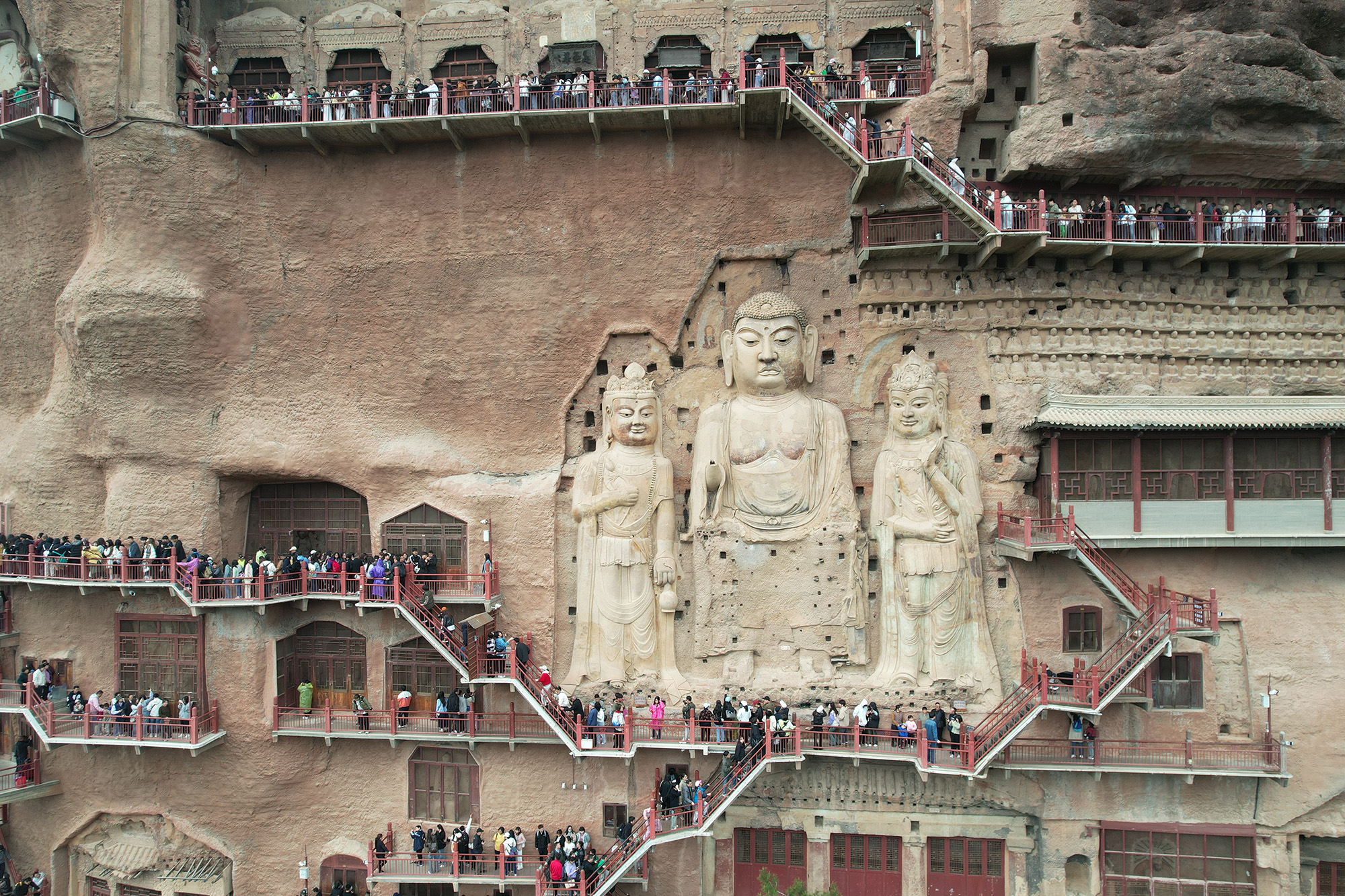
The just-concluded Qingming Festival holiday proved to be a boon for the tourism industry in the country with both the number of travelers and tourism revenue soaring as people made the most of the short break.
Figures from the Ministry of Culture and Tourism on Saturday showed that domestic destinations witnessed about 119 million visits during the three-day holiday, which started on Thursday, the Tomb Sweeping Day, up 11.5 percent compared with 2019. There was only one day off for the occasion last year, and it resulted in 23.77 million domestic visits.
The travel boom during the holiday generated revenue of about 54 billion yuan ($7.47 billion), up 12.7 percent compared with 2019, the ministry said.
Reports and figures from travel agencies and local government departments also paint a positive picture. Travel portal Trip.com Group said that over the holiday, bookings for short-distance tours to destinations within cities customers live in grew 211 percent year-on-year, and bookings to neighboring destinations located outside the cities they live in skyrocketed 350 percent year-on-year.
The top attractions among users of the travel portal were places well known for flower blossoms at this time of the year. Ticket bookings for such attractions surged 391 percent year-on-year.
Luoyang, a city famous for peony flowers in Central China's Henan province, Nyingchi in the Xizang autonomous region with its peach blossom-covered mountains and Nanjing with plum blossoms in the eastern province of Jiangsu, were among the popular destinations for nature lovers during the holiday.
"People have shown a strong desire to travel this holiday, and the tourism market is in continuous recovery," said Qi Chunguang, vice-president of online travel agency Tuniu.
He said the platform saw hotel bookings grow 68 percent year-on-year, and the number of self-driving travelers using Tuniu's services increased 61 percent year-on-year. "The results meet our expectations," he added.
In addition to traditionally popular destinations such as Beijing and Shanghai, lesser-known places also saw huge tourist influx after local food and unique folk activities found viral online fame.
Quanzhou, a city in the southeastern province of Fujian, welcomed a huge number of travelers attracted by its traditional "head-pinned flowers".Qunar, an online travel agency, said that hotel bookings to Quanzhou grew 3.3-fold during the holiday.
"I was stunned by the online short videos of girls wearing well-arranged flowers on their heads. I told my boyfriend that I must try that and take pictures," said Yan Nan, a 27-year-old from Beijing, who traveled to Quanzhou on Wednesday, a day before the holiday began, and returned on Saturday.
Yan said she went to Xunpu village, considered the birthplace of "head-pinned flowers", on Thursday afternoon, and it was crowded. "I booked the service online, which cost 40 yuan. The auntie was very nice and patient, and did the flower arrangement in about half an hour. It was a good experience and I will visit the place again in the near future but avoid the peak travel periods," she said.
Xiao Peng, a researcher from Qunar, said that young people, who are the main drivers of tourism consumption, prefer diverse or unique traveling experiences. "An ancient street or a delicious cuisine may attract a large number of travelers to a place," he said.
The inbound and outbound tourism market also showed good performance over the holiday. According to the National Immigration Administration, the Chinese mainland saw about 5.19 million entries and exits, up 69.6 percent year-on-year.
Qi Chunguang, vice-president of Tuniu, said: "Thailand, Japan, the Maldives, Egypt and New Zealand were popular among our customers. Some tailored tour products to Southeast Asian destinations including Singapore, Malaysia and Thailand were also popular, especially among young people, age 25 to 35, as the three countries are visa-free for Chinese citizens."


